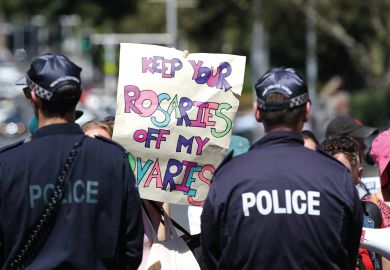That is according to new figures from the Equality Challenge Unit. The organisation, which works to “further and support equality and diversity for staff and students” in the sector, finds that across all academic roles, the majority (56 per cent) are held by men, with a higher proportion of male academic staff on open-ended or permanent contracts (67 per cent) than their female counterparts (62 per cent).
The male majority is most stark at professorial and head of institution levels, where 78 and 81 per cent respectively are men, the annual Equality in HE: Statistical Report from the ECU found.
Among professional and support staff there is a female majority (63 per cent). Some 70 per cent of employees in assistant professional or administrative roles are women, compared with 41 per cent of those in deputy and pro vice-chancellor positions. Across all roles, the mean gender pay gap in the UK was found to be 19 per cent.
The report also looks at the ethnic make-up of the UK’s universities. It finds that between 2003 and 2013, the proportion of staff who identified as “UK white” decreased among both academic and professional and support staff by 8 and 5 per cent respectively.
Electrical, electronic and computer engineering have the highest proportion of non-UK black and minority ethnic staff (48 per cent), while archaeology (4 per cent) and psychology and behavioural sciences (14 per cent) have the lowest.
The proportion of UK black staff who are professors (4 per cent) is lower than for any other ethnic group.
Among non-UK academic staff, 15 per cent of white staff earn a salary of £56,467 or more, compared with 7 per cent of BME staff.
In its section on disability, the report finds that the proportion of all students who disclosed as disabled increased from 5 per cent in 2003-04 to 10 per cent in 2012-13.
However, staff disclosure rates are much lower. The report cites figures from the Office for Disability Issues Family Resources Survey, which states that 16 per cent of working age adults are disabled. Despite this, just 3 per cent of academic staff and 5 per cent of professional and support staff disclosed as disabled in 2012-13.
“This year the data shows us that the sector is managing to reduce the ethnicity degree attainment gap, is providing a more inclusive and attractive environment for greater numbers of disabled students, and numbers of BME and female senior staff are slowly increasing,” said David Ruebain, chief executive of the ECU.
“However, universities need to be focusing on specific areas to take action if we are going to transform the culture of HE into one that is fair, inclusive, and offers the same chances to everyone.”
Register to continue
Why register?
- Registration is free and only takes a moment
- Once registered, you can read 3 articles a month
- Sign up for our newsletter
Subscribe
Or subscribe for unlimited access to:
- Unlimited access to news, views, insights & reviews
- Digital editions
- Digital access to THE’s university and college rankings analysis
Already registered or a current subscriber? Login



